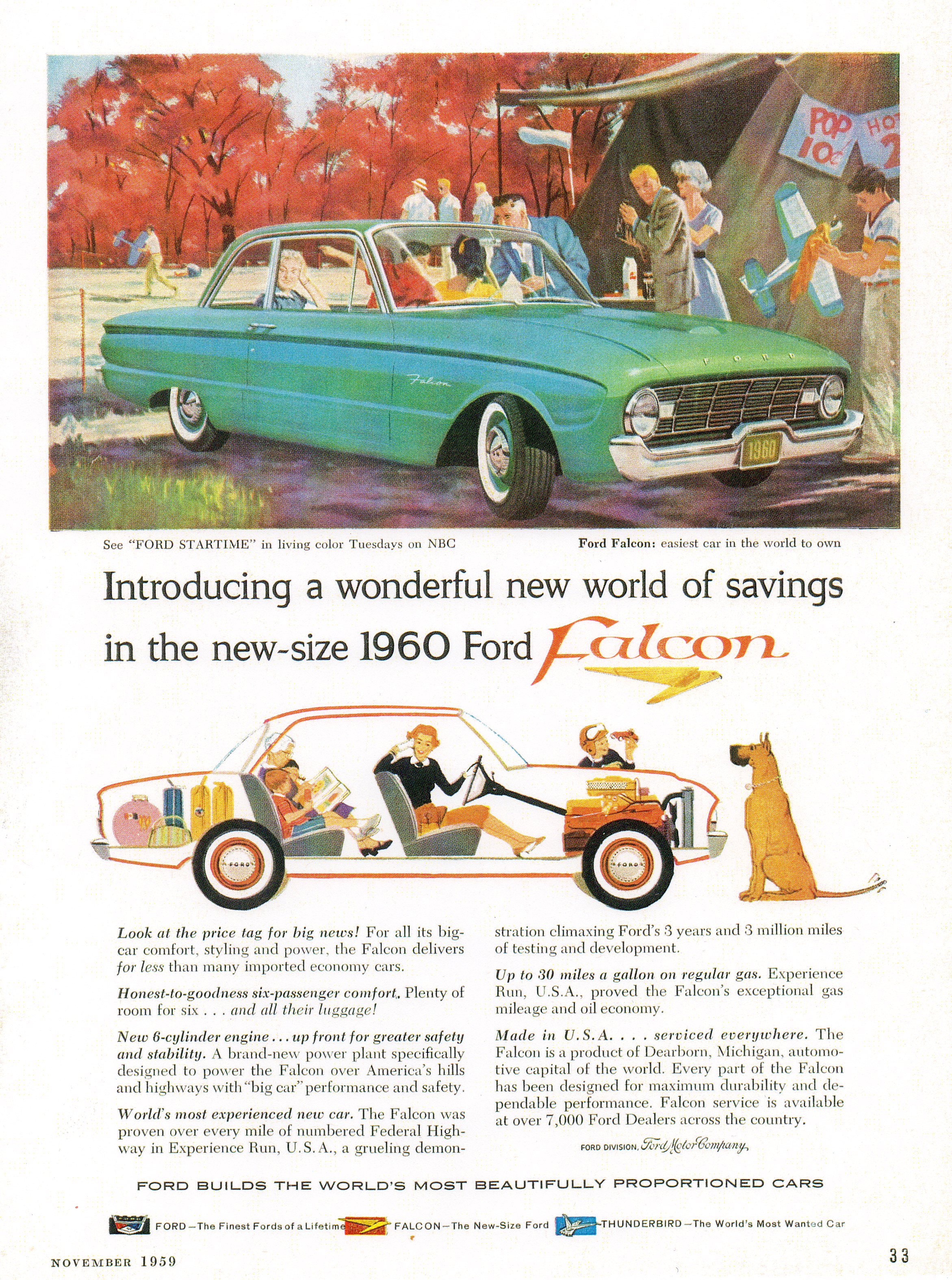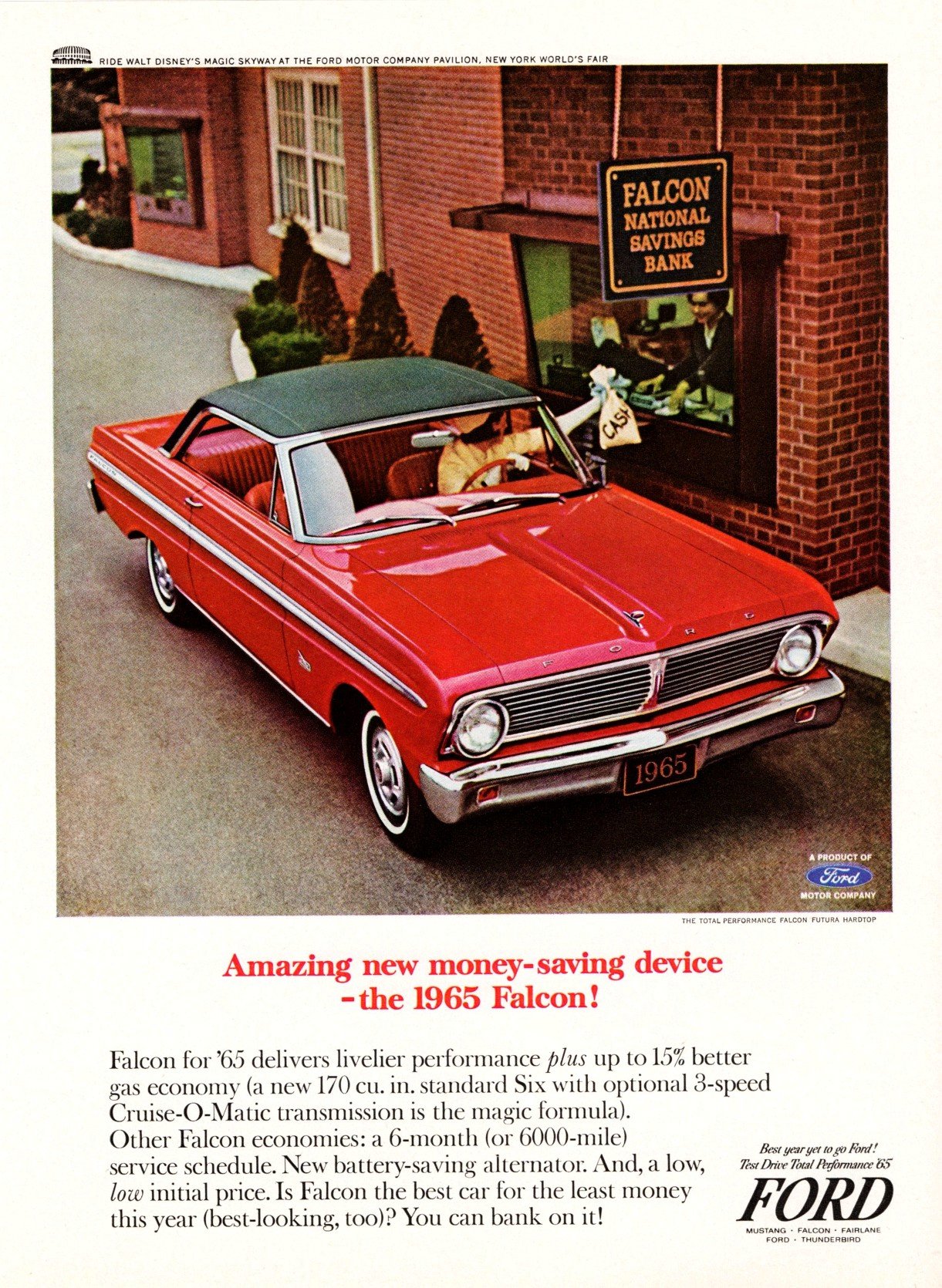 Loading... Please wait...
Loading... Please wait...Shop By Vehicle
Popular Brands
Soaring Over Roads
Posted by KYTE on 22nd May 2017
From 1960 to 1970 the Ford Falcon was an animal to be
reckoned with.
Competition in the compact car market has always been fierce. At the end of the
50's, more European imports were seen in the US. People became interested in
smaller cars but were still adamant about buying American. At the same time,
large automobiles were becoming more expensive to produce.
American families were beginning to purchase second cars and market research
was beginning to be used to see what preferences were like. It seemed that
compact cars were in but room and storage was still a priority.
Ford General Manager Robert McNamara was in charge of putting together a team
that could build something smaller but still within American tastes. The design
was a unibody with standard suspension using coil springs in front while a
focus was placed on keeping costs as well as weight down. With limitations in
mind, engineer in charge Harley Copp took to using parts already produced by Ford
to build something distinct.
The first Falcon engine was a 95 hp, 2.4 L Mileage Maker straight-6 with a
single-barrel carburetor. The transmission options were manual 3-speed with
column shifter or Ford-O-Matic.
In 1961 two new Falcons were introduced. One was the bucket seat, higher trim
Futura sedan and the other was a sedan delivery. Advertising brochures began to
feature characters from Charles Schulz's Peanuts comic strip as Ford pushed
their cars into more advertising formats.
A slew of models with all levels of trim became available over time.
Ford and the public loved the car. Competitors began to notice and started
developing their own compacts to compete.
The Falcon took on a more angular and modern look in 1964. A large variety of
body styles were available off the bat. Around this time the Ford Mustang was
developed and released. The Mustang took many cues from the Falcon but was
marketed to be the car of the young and sporty, beginning taking a significant
number of sales away from the Falcon.
Another redesign came in 1966. This iteration was based on a shortened Fairlane
platform, taking on a longer hood, short deck, and becoming more Mustang-like.
One more change came in 1970. This was the last model of the Ford Falcon
released in North America. Sales had declined too significantly between
competitor cars and the overwhelming popularity of the Mustang. The Falcon name
was transferred to a low price version of the Ford Fairlane and marketed as the
Falcon '70 1/2. This version was available as a 2 door sedan, 4 door sedan, 4
door wagon, and all used the Fairlane/Torino power trains.
Although the demise of the Falcon came in America, Australian engineers were
given the chance to keep the line alive. The Falcon name continued to modern
car styles and had its last Australian model in 2014.
In the end though, not much can beat the classic American style of the Ford
Falcon.
